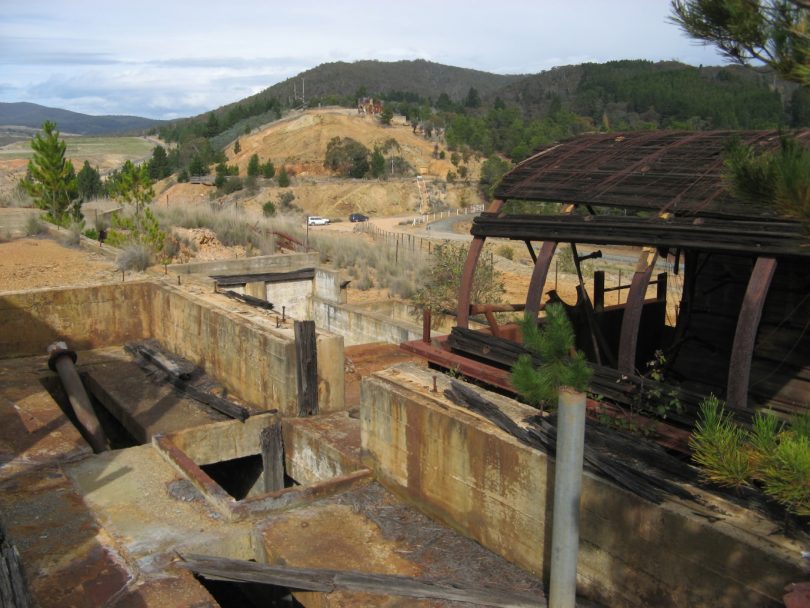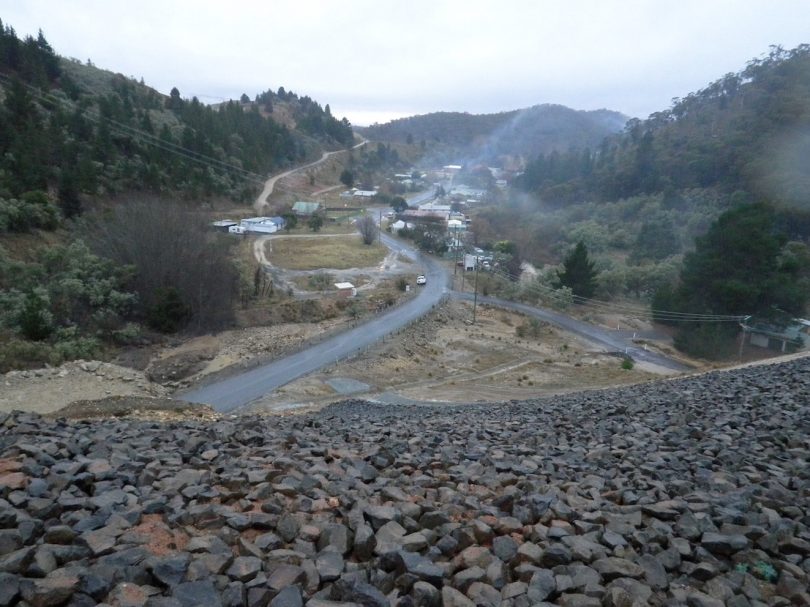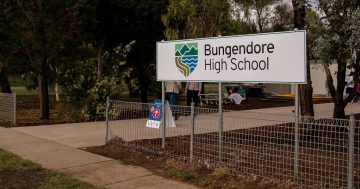
Part of the former Lake George Mine at Captains Flat where lead contamination has been detected. Photo: NSW Government.
High levels of lead from the former Lake George Mine have been detected at Captains Flat following initial testing by the NSW Environment Protection Authority (EPA) this week.
EPA inspectors will continue testing during the next few weeks in public and community spaces to check for lead contamination from the mine which operated from 1892 until 1962, producing lead, zinc, copper, pyrite, silver and gold.
In a community notice mailed to residents of the town this week, the NSW EPA said elevated levels of lead were present on the former Lake George Mine site and were also identified in the rail corridor.
“The elevated levels of lead found in the rail corridor are likely to have come from the transport of ore extracted from the former Lake George Mine into rail trucks,” the notice said.
The NSW EPA said extensive rehabilitation works have been carried out since the mine closed to manage erosion, improve safety and control tailings pollution from the site.
There have also been ongoing issues from the seepage of acid mine drainage and heavy metal contaminants spreading from the site. Zinc is the primary contaminant of concern.

The Lake George Mine operated from 1892 until 1962, producing lead, zinc, copper, pyrite, silver and gold. Photo: Supplied.
The letter to Captains Flat residents noted that standards for environmental protection like dust management were very different when mining operations commenced there around 120 years ago.
“Highly mineralised soil and dust would have been spread around the mine site during its operation and at the loading site in the rail corridor. Waste was also stockpiled on the mine site and it is not known how far soil and dust from the mine site and rail corridor may have spread,” the letter said.
Captains Flat resident Claire Hooker and her husband Mark have been residents at Captains Flat for 10 years. Claire homeschools her nine children while producing a weekly blog called This Tribe Of Mine.
Claire told Region Media the contamination could be dangerous for the town, but this was the first she had heard about it.

Claire Hooker and her husband Mark and their nine children live at Captains Flat. Photo: Jodi Bingley Photography.
“We received the letter saying there’s not necessarily lead contamination in the community; however, they’re just testing things at the moment and saying you can have your home tested,” Claire said.
“There’s obviously no point in worrying about things at this point, but lead contamination can be quite a dangerous thing from what I’ve already heard if it were to be found in the drinking water.
“That could potentially be bad for the whole town and for us too, as there’s 11 of us here.
“If it’s found there’s lead in other parts of the town, that’s something we’d be very concerned about.”
Claire said the Captains Flat community is very supportive and would be keen to find out the extent of potential contamination of lead.
“This is the first I’ve heard about the issue since we moved here, but at least there is testing now, so there’s no point worrying at the moment,” she said.
The NSW EPA will test soil from publicly owned land in Captains Flat, including the school, community hall and parks and is also available to test privately owned properties.
“If the results show elevated levels, the NSW Government will work with the community to ensure they know what actions they can take to live safely with lead,” the letter said.
Similar issues have also been found in Broken Hill where potential exposure to lead is managed by regular handwashing, using raised garden beds and covering exposed dirt with turf or mulch to prevent dust being carried by the wind.
Community information sessions will be held at the Captains Flat Community Hall next Monday and Tuesday (8 and 9 February) between 2:00 pm and 7:00 pm. Residents will be able to speak with representatives from the NSW EPA, NSW Health, Transport for NSW, Department of Regional NSW, Crown Lands, Local Land Services and the Queanbeyan-Palerang Regional Council.













